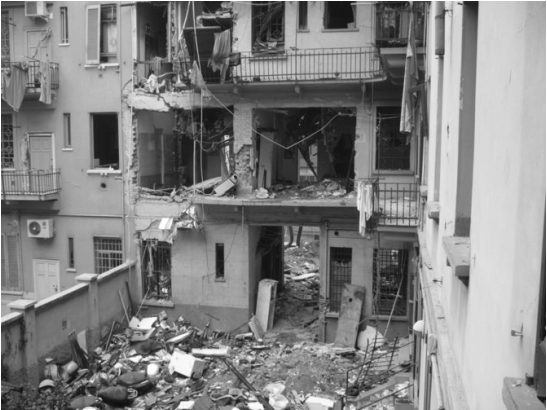The explosion and subsequent collapse of a residential building caused four deaths, ten injured and 3,000,000 Euros worth of damage.
|
The building under investigation was an early 1900's bearing walls structure. After a preliminary inspection, we immediately noticed that:
• The main damage was on the first floor • The above levels reported minor damage • The overpressure had pushed the facade of the first floor outwards, and the epicentre of the damage was situated under the floor between the first and second levels as if the origin were towards the ceiling of the apartment. • One of the floor beams bent out leftwards (the other ones had been thrust downwards by the load-bearing wall of the facade) as if pressure had been applied from right to left and from the top towards the bottom. • The doors had been thrust outwards in an orthogonal direction from the house by the shock waves made by the explosion. Looking at the effects and the damage done, we were able to understand that: • The explosion had been provoked by a mixture of air and methane released on the first floor. • Only one explosion caused the damage. Further investigation showed that the methane leak was due to a malfunction of the hob, causing the gas to saturate all the rooms on the first floor, thereby producing the explosion. |


